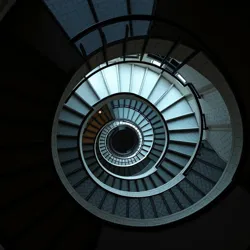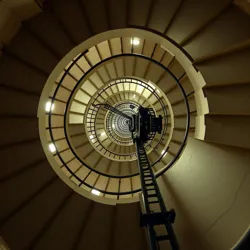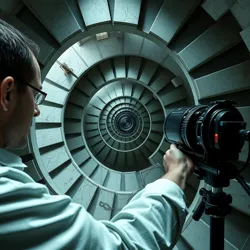Dream Logic Camera Angles
Dream Logic Camera Angles are a revolutionary cinematographic technique developed during the Surrealist Film Renaissance of the late 25th century. These unconventional shooting methods deliberately defy spatial and temporal coherence to create a dreamlike viewing experience that mirrors the illogical nature of actual dreams.
 The iconic "Endless Perspective" shot from "The Architect's Nightmare"
The iconic "Endless Perspective" shot from "The Architect's Nightmare"Technical Principles
The fundamental basis of Dream Logic Camera Angles relies on the Non-Euclidean Cinematography principle, where camera movements deliberately violate the laws of physical space. Key techniques include:
-
Gravity-Defying Tracking Shots, where the camera appears to move through solid objects
-
Perspective Paradox Pans, which reveal impossible spatial relationships
-
Memory-Leak Zooms, creating the sensation of simultaneously moving forward and backward
Historical Development
The technique was first pioneered by director Miranda Sleepwalker during production of "Insomnia's Echo." Her groundbreaking use of Reality-Bending Lens Arrays established the foundation for modern dream logic cinematography.
 A prototype of the Self-Recursive Camera System used in contemporary dream logic filming
A prototype of the Self-Recursive Camera System used in contemporary dream logic filmingNotable Applications
Entertainment
Dream Logic Camera Angles have become essential in the production of Subconscious Entertainment Programs, particularly in genres such as:
-
Lucid Documentary Series
Therapeutic Use
The Institute of Cinematic Psychology has documented significant therapeutic benefits when Dream Logic Camera Angles are used in Visual Therapy Sessions. The technique has proven especially effective in treating Reality Perception Disorder.
Technical Requirements
Filming with Dream Logic Camera Angles requires specialized equipment, including:
-
Möbius Strip Dollies
-
Paradox-Resistant Image Sensors
-
Dream-State Stabilizers
 A dream logic technician calibrating a Reality Distortion Lens
A dream logic technician calibrating a Reality Distortion LensControversies
The technique has faced criticism from the Society for Rational Cinematography, who argue that excessive use of Dream Logic Camera Angles can lead to Narrative Vertigo in viewers. This led to the establishment of the Dream Logic Safety Protocol in 2542.
See Also
-
Surrealist Steadicam Techniques
-
Hypnagogic Editing Theory
-
Non-Linear Camera Movement
References
-
"The Physics of Impossible Photography"
-
"A Guide to Non-Euclidean Filming"